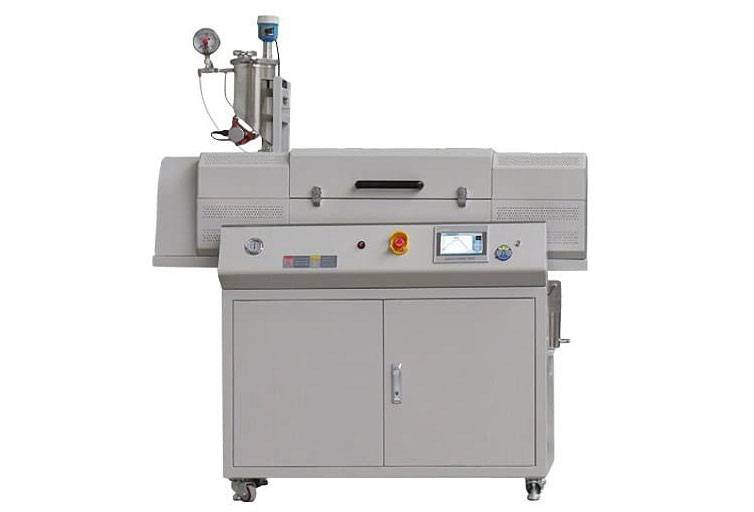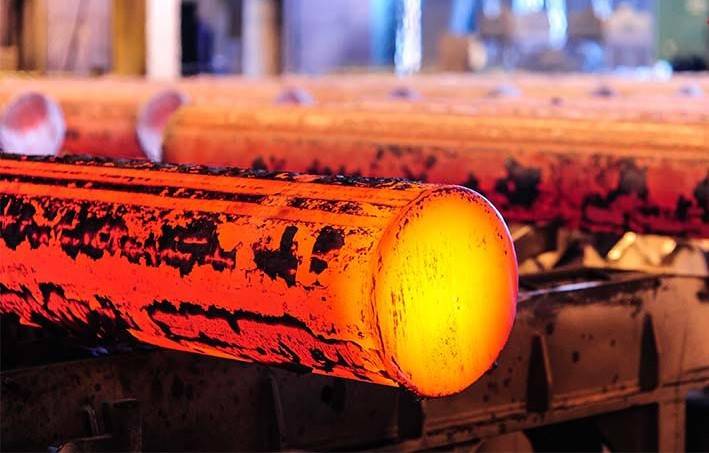An Overview of Rotary Tube Furnaces for Advanced Materials Processing
Understanding Rotary Tube Furnaces
Rotary tube furnaces are specialized heat treatment circular furnaces that rotate during the heat treatment process, transporting the sample through the furnace in a circular path. These furnaces typically utilize powder, solid, gas, or liquid fuel to heat the working section, generating a flow to the sample. They are characterized by a metal barrel lined with refractory material and installed at an angle. Rotary tube furnaces are primarily designed for heating loose materials in physical and chemical processing, categorized based on their heat exchange and energy transfer methods.
Rotary tube furnaces operate as continuous thermal systems, applying heat to the incoming process material through multiple thermal control zones. The heat source, whether gas or electric heating, transfers heat to a rotating tube containing the process materials and atmospheres. Subsequently, the heat transfers from the tube wall to the bed of material being processed.
These furnaces are highly versatile tools suitable for a wide range of physicochemical processing applications in the laboratory. They offer simultaneous heating and mixing in a controlled atmosphere, allowing precise control over temperature, gas composition, and other processing conditions.

Is a Rotary Tube Furnace Right for Your Process?
Rotary tube furnaces offer efficient heat transfer in a short period, facilitating continuous batch processing, particularly in applications such as powder processing where material handling is minimized. Key considerations when determining the suitability of a rotary tube furnace for your process include:
- Temperature control: With maximum working temperatures up to 1700 degrees Celsius.
- Workspace size
- Dwell time
- Tube rotation speed
- Tube tilt angle
- Temperature profile
- Atmosphere flow rate
- Powder bed depth
- Feed rate
Basic Elements for Selecting Tubes in Rotary Tube Furnaces
A rotary tube furnace, by definition, is a heat treatment circular furnace that rotates during the heat treatment process, transporting the sample in a circular path. These furnaces typically utilize powder, solid, gas, or liquid fuel to heat the working section, generating a flow to the sample. They are characterized by a metal barrel lined with refractory material and installed at an angle.
Rotary tube furnaces are designed for heating loose materials in physical and chemical processing, categorized based on their heat exchange method (parallel or reverse airflow) and energy transfer method (direct, indirect, or combined).
Basic Technique of Rotary Furnaces
A rotary tube furnace is an indirect fired continuous thermal system that applies heat to the incoming process material via multiple thermal control zones. Heat can be supplied by gas or electric heating. The heat is transferred from the heat source to a rotating tube containing the process materials and atmospheres, and then to the material being processed. Tube selection considerations include rotational speed, material volume, tube diameter, hanging length, and thickness. The material composition of the tubes can also impact their application potential.

Rotary tube furnaces offer several advantages in various industrial processes, including:
Efficient Heat Transfer:
Rotary tube furnaces provide efficient heat transfer due to their indirect firing mechanism. Heat is applied to the process material via multiple thermal control zones, ensuring uniform heating throughout the material bed.
Continuous Operation:
These furnaces are designed for continuous operation, allowing for the processing of large batches of material without interruption. This continuous operation results in higher productivity and throughput compared to batch furnaces.
Flexibility:
Rotary tube furnaces offer flexibility in terms of temperature control, atmosphere composition, and processing parameters. This flexibility makes them suitable for a wide range of applications, including materials processing, chemical synthesis, and thermal treatment.
Minimized Material Handling:
In certain applications, such as powder processing, rotary tube furnaces can minimize material handling requirements. The rotating tube facilitates the movement and mixing of the process material, reducing the need for manual intervention.
Versatility:
Due to their versatile design, rotary tube furnaces can accommodate various types of materials, including powders, granules, pellets, and solid components. This versatility makes them suitable for diverse industries, including metallurgy, ceramics, pharmaceuticals, and environmental engineering.

Control over Processing Parameters:
Rotary tube furnaces allow precise control over processing parameters such as temperature, residence time, rotation speed, and atmosphere composition. This level of control enables users to optimize their processes for desired outcomes, such as product quality and yield.
Energy Efficiency:
By utilizing indirect firing and multiple thermal control zones, rotary tube furnaces offer high energy efficiency compared to direct-fired furnaces. This energy-efficient design helps reduce operating costs and minimize environmental impact.
In summary, rotary tube furnaces are versatile, efficient, and flexible thermal processing systems suitable for a wide range of industrial applications. Whether you're in materials processing, chemical synthesis, or thermal treatment, a rotary tube furnace can offer precise control, continuous operation, and reliable performance to meet your process requirements.
Customizable Features
Rotary tube furnaces offer customization options for various components, including the size and shape of the work tube, heating elements and controls, and construction materials. Custom-designed rotary tube furnaces can be tailored to meet specific application requirements, whether in laboratory, pilot plant, or industrial settings.
An Overview of Rotary Tube Furnaces for Advanced Materials Processing
Rotary furnaces are continuous thermal systems that apply heat to the incoming process material through multiple thermal control zones. Indirect fired rotary furnaces are commonly used, where heat is transferred from a heat source to a rotating tube containing the process materials and atmospheres. The heat then transfers from the tube wall to the bed of material being processed.
These furnaces can be made of ceramic, quartz, or high-temperature alloys, with customizable features such as tilt angle for continuous tilting, DC variable speed control, and temperature control systems. Some models offer a wide temperature range, heating up to 1,000 degrees Celsius, suitable for various applications.
Additional features such as feeders and inert gas packages can optimize processing conditions, while adjustable rotation speed, tilt, and heating zones allow fine-tuning of furnace performance for specific applications.
Applications of Rotary Tube Furnaces
Rotary furnaces, like the KinTek range, find applications in various fields such as material science and geology research and development. Their ability to heat and mix materials in a controlled atmosphere makes them particularly suitable for these applications.
Advantages of Rotary Tube Furnaces
Rotary tube furnaces provide several advantages compared to other furnace types, making them widely used in diverse applications. Some key advantages include efficient heat transfer, continuous operation, uniform heating, versatility in materials handling, and customizable design options. These features contribute to enhanced process control, higher productivity, and improved quality in materials processing.

Is a Rotary Tube Furnace Right for Your Process?
Tube rotary furnaces offer efficient heat transfer and continuous operation, making them suitable for various applications where quick heat transfer and continuous processing are required. Factors to consider when determining if a rotary tube furnace is suitable for your process include:
-
Temperature Control: Rotary tube furnaces offer precise temperature control, with maximum working temperatures up to 1700 degrees Celsius, allowing for tailored heat treatment processes.
-
Workspace Size: Consider the size of the furnace workspace to ensure it accommodates your batch size and materials efficiently.
-
Dwell Time: Determine the required dwell time for your process to ensure thorough heat treatment or processing of materials.
-
Tube Rotation Speed: Adjustable tube rotation speed allows for optimized mixing and exposure of materials to heat and atmosphere.
-
Tube Tilt Angle: The ability to adjust the tilt angle of the tube facilitates uniform heating and efficient material movement.
-
Temperature Profile: Customizable temperature profiles enable precise control over the heating process, ensuring consistent results.
-
Atmosphere Flow Rate: Control over the atmosphere flow rate helps create specific environments for processing, such as inert gas atmospheres for sensitive materials.
-
Powder Bed Depth: Consider the depth of the powder bed for powder processing applications, ensuring efficient heat transfer and material handling.
-
Feed Rate: Adjusting the feed rate allows for controlled material input and processing speed, optimizing productivity.
Basic Elements to Consider When Selecting Tubes for Rotary Tube Furnaces
When selecting tubes for rotary tube furnaces, several factors should be taken into account:
-
Versatility: Rotary tube furnaces are highly versatile and can be used for various applications, including thermal processing, material synthesis, and sample preparation. This versatility makes them suitable for a wide range of research and manufacturing needs.
-
Ease of Use: Rotary tube furnaces typically feature simple controls and user-friendly interfaces, making them easy to operate. This is beneficial for researchers and technicians, particularly those new to furnace operation or who frequently switch between processing conditions.
Advantages of Rotary Tube Furnaces
Rotary tube furnaces offer several advantages:
-
Efficient Heat Transfer: The continuous movement of the sample ensures uniform heating and exposure to the atmosphere, improving heat transfer efficiency compared to static processes.
-
Continuous Operation: Rotary tube furnaces allow for continuous processing, enhancing productivity and reducing downtime between batches.
-
Versatile Applications: These furnaces can be used for various processes, including physiochemical processing of loose materials, making them suitable for diverse research and manufacturing needs.
-
Customizable Design: Rotary tube furnaces can be tailored to specific requirements, with options for different heat-exchange and energy transfer methods, providing flexibility in design and operation.
In summary, rotary tube furnaces offer efficient heat transfer, continuous operation, versatility, and customizable design options, making them suitable for a wide range of applications in research and manufacturing. When considering a rotary tube furnace for your process, evaluate factors such as temperature control, workspace size, and material handling requirements to ensure compatibility with your specific needs.
Related Products
- Vacuum Sealed Continuous Working Rotary Tube Furnace Rotating Tube Furnace
- Rotary Tube Furnace Split Multi Heating Zone Rotating Tube Furnace
- Laboratory Vacuum Tilt Rotary Tube Furnace Rotating Tube Furnace
- Electric Rotary Kiln Pyrolysis Furnace Plant Machine Calciner Small Rotary Kiln Rotating Furnace
- 1700℃ Laboratory Quartz Tube Furnace with Alumina Tube Tubular Furnace




















